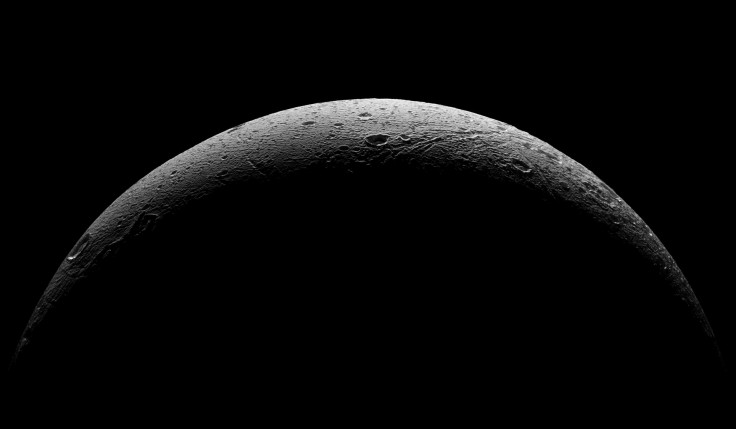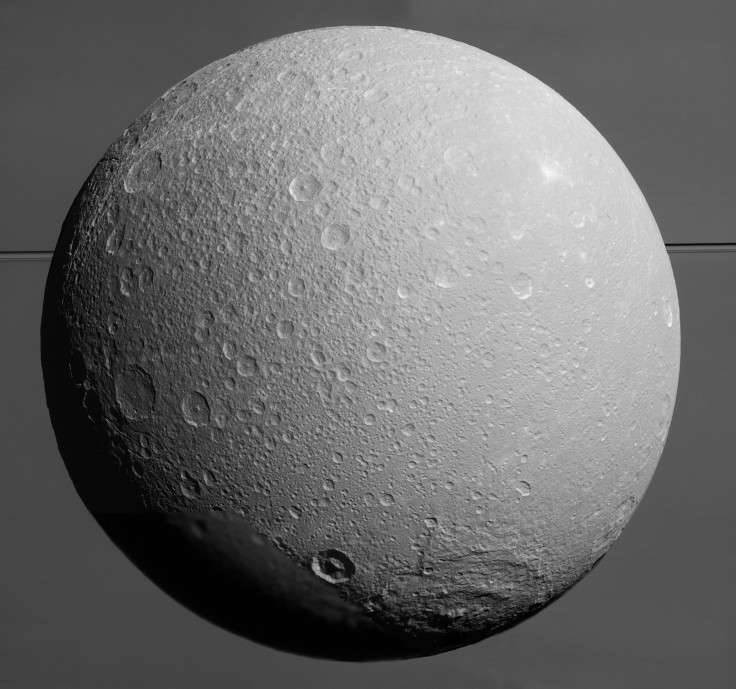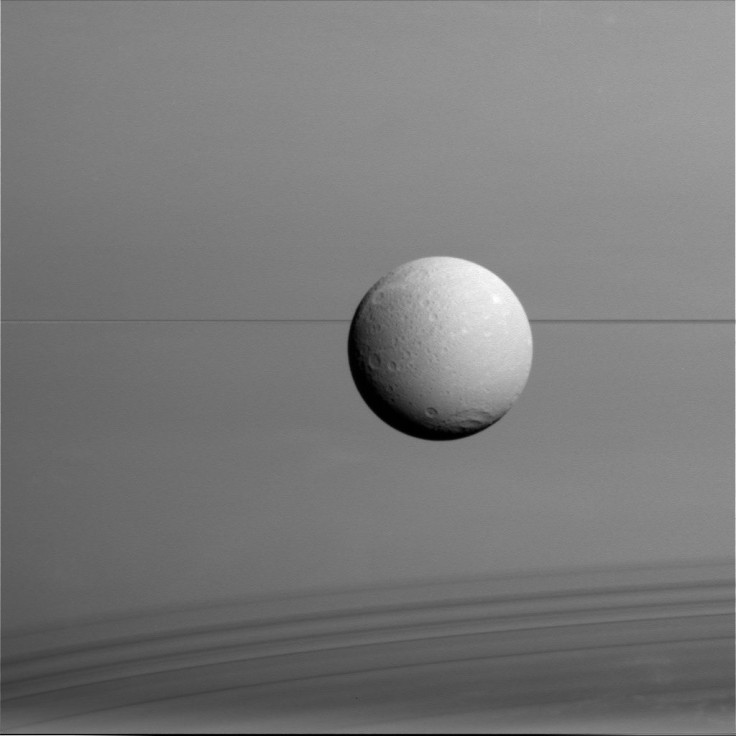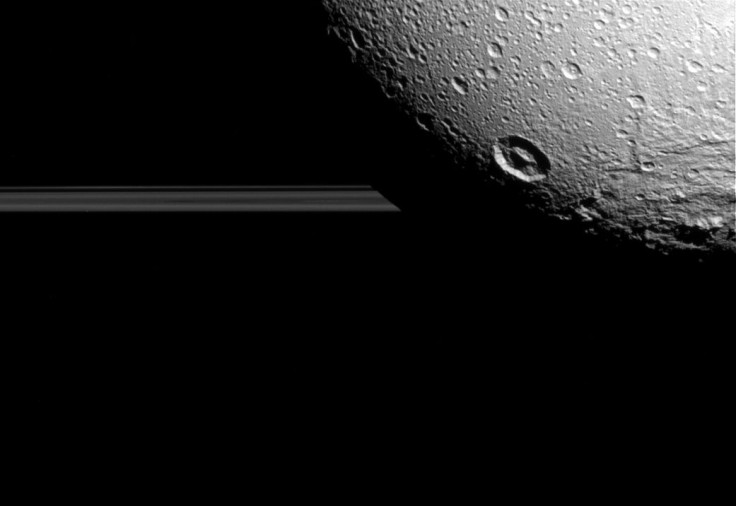NASA's Cassini Spacecraft Captures Breathtaking Images Of Saturn's Moon Dione [PHOTOS]

NASA on Thursday released some of the highest-resolution photographs ever captured of Saturn’s moon Dione. The images, which show the cratered and pockmarked surface of the small icy world, were taken by the Cassini probe, which entered into orbit around the planet in 2004.
“I am moved, as I know everyone else is, looking at these exquisite images of Dione’s surface and crescent, and knowing that they are the last we will see of this far-off world for a very long time to come,” Carolyn Porco, Cassini imaging team lead at the Space Science Institute at Boulder, Colorado, said in a statement. “Right down to the last, Cassini has faithfully delivered another extraordinary set of riches.”


Scientists hope to learn more about Dione’s interior structure and geologic processes by studying the images, and data gathered using the magnetosphere, and plasma and gravity science instruments, aboard the space probe.
“We had just enough time to snap a few images, giving us nice, high resolution looks at the surface,” Tilmann Denk, a Cassini participating scientist at Freie University in Berlin, said in the statement. “We were able to make use of reflected sunlight from Saturn as an additional light source, which revealed details in the shadows of some of the images.”


Launched in 1997, the Cassini mission has been working since July 2004 to study the gas giant and its huge family of 62 moons and several smaller moonlets.
Before the mission’s culmination in late 2017, the spacecraft will make a few other close flybys of the planet’s satellites, including that of the geologically active Enceladus. Additionally, Cassini will make nearly two dozen flybys of several small, irregularly shaped moons, including Daphnis, Telesto, Epimetheus and Aegaeon.
And, before its fatal plunge through the gas giant’s atmosphere, the spacecraft will repeatedly dive through the space between Saturn and its rings, providing scientists best-ever views of the gigantic structures.
© Copyright IBTimes 2025. All rights reserved.






















